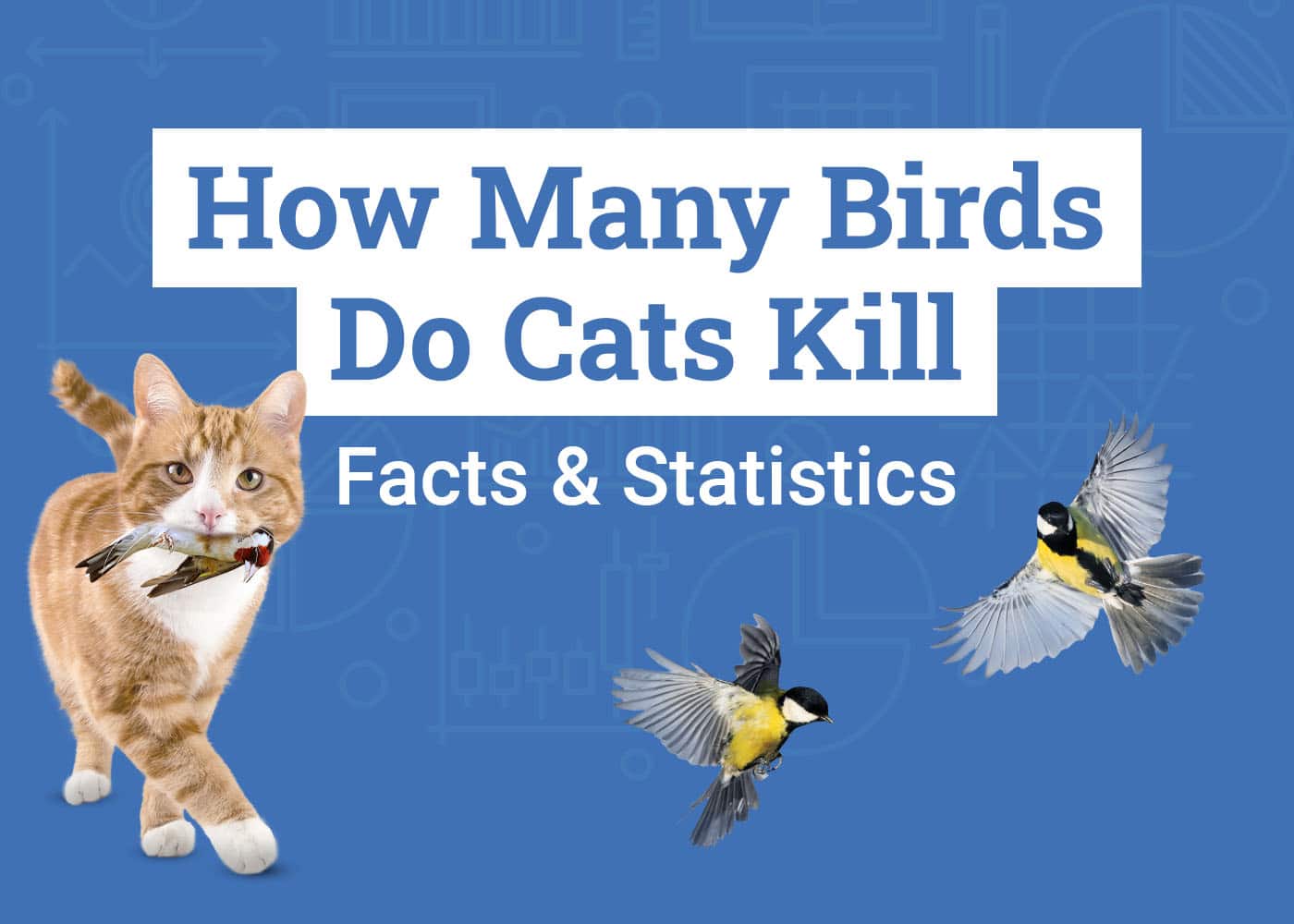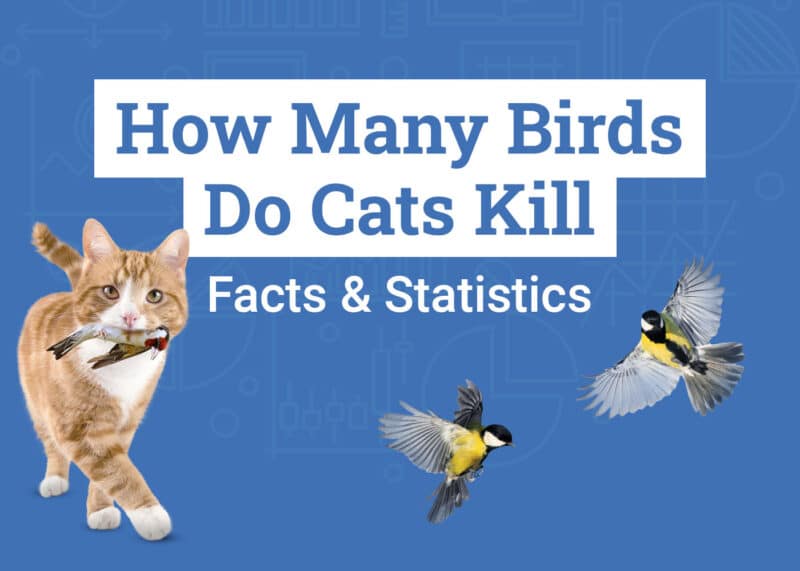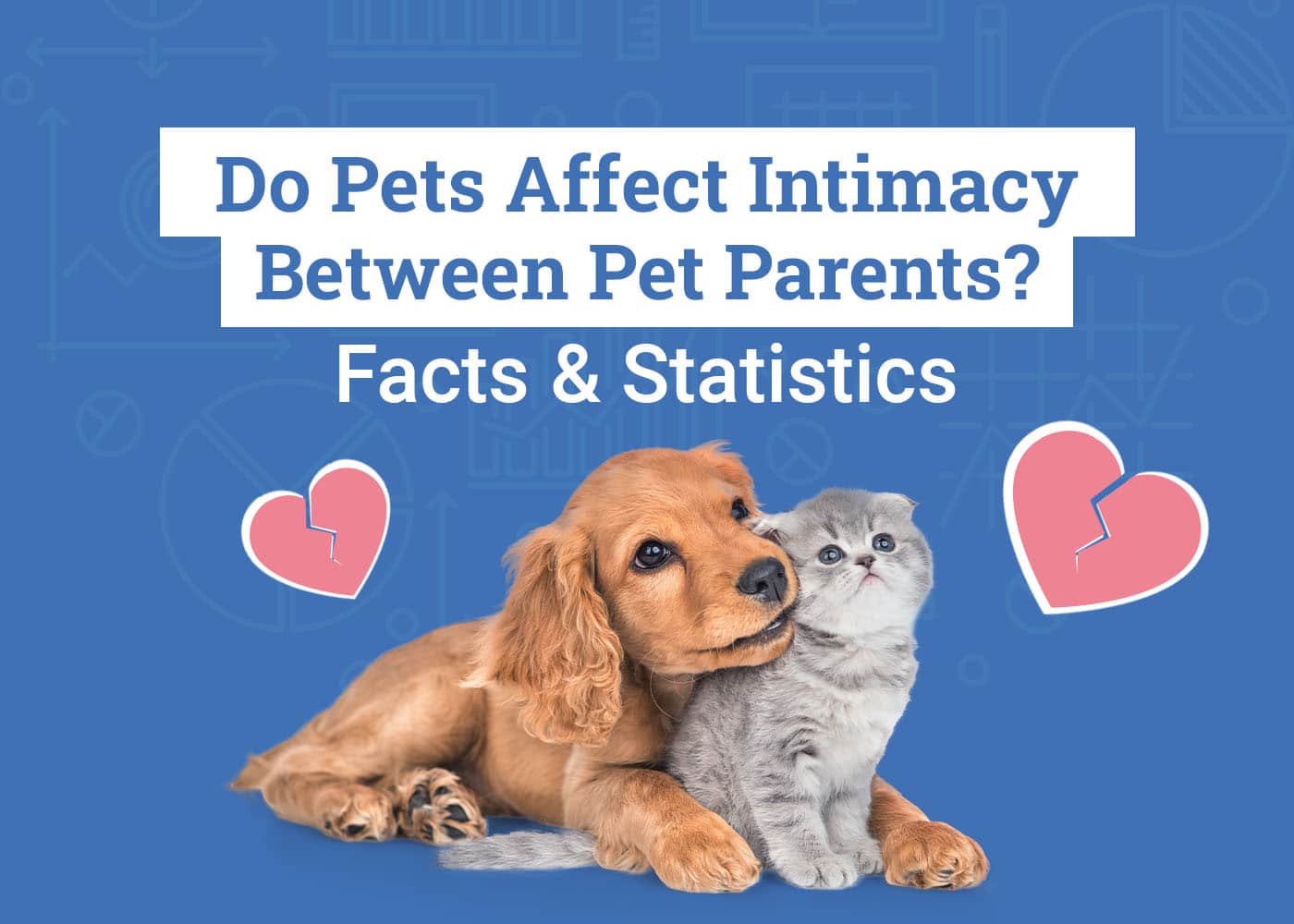Note: This article’s statistics come from third-party sources and do not represent the opinions of this website.
Cats were domesticated about 10,000 years ago, and they have since made their way to nearly all corners of the globe. Felines are now found on all continents except Antarctica, where they are popular as pets, but they also form significant feral and semi-feral populations. Unfortunately, thanks to their skill as hunters, cats are also one of the most significant threats to bird populations in many countries. In the United States, cats kill an estimated 1.3–4.0 billion alone. In this article, we’ll cover 13 statistics you need to know about how many birds cats kill worldwide.
- How Many Birds Are Killed by Cats Worldwide?
- What Impact Do Cat Killings Have on the Overall Bird Population?
- Do Pet Cats or Feral Cats Kill More Birds?
The 13 Statistics for How Many Birds Do Cats Kill
- In the United States, cats kill an estimated 1.3–4.0 billion birds each year.
- In the United Kingdom, cats kill approximately 27 million birds each spring and summer.
- The most recent study done in Australia in 2017 estimated that cats killed an average of 1 million birds per day, about 377 million per year.
- In Canada, an estimated 100–350 million birds fall victim to cats each year.
- In Poland, cats kill roughly 136 million birds each year.
- The domestic cats of Cape Town, South Africa, kill about 450,000 cats each year.
- A 2021 study estimated that cats kill between 2.69–5.52 billion birds in China each year.
- Cats are responsible for the extinction of at least 40 bird species worldwide.
- On islands worldwide, feral cats are the main threat to almost 8% of endangered species, including birds.
- An estimated 2%–7% of birds in southern Canada are killed by cats each year.
- In the United States, unowned cats are responsible for about 69% of annual bird deaths.
- In Australia, feral cats are responsible for about 272 million of the 377 million yearly bird killings.
- Overall, unowned cats kill three times as many animals, including birds, than pet cats that are allowed to roam.
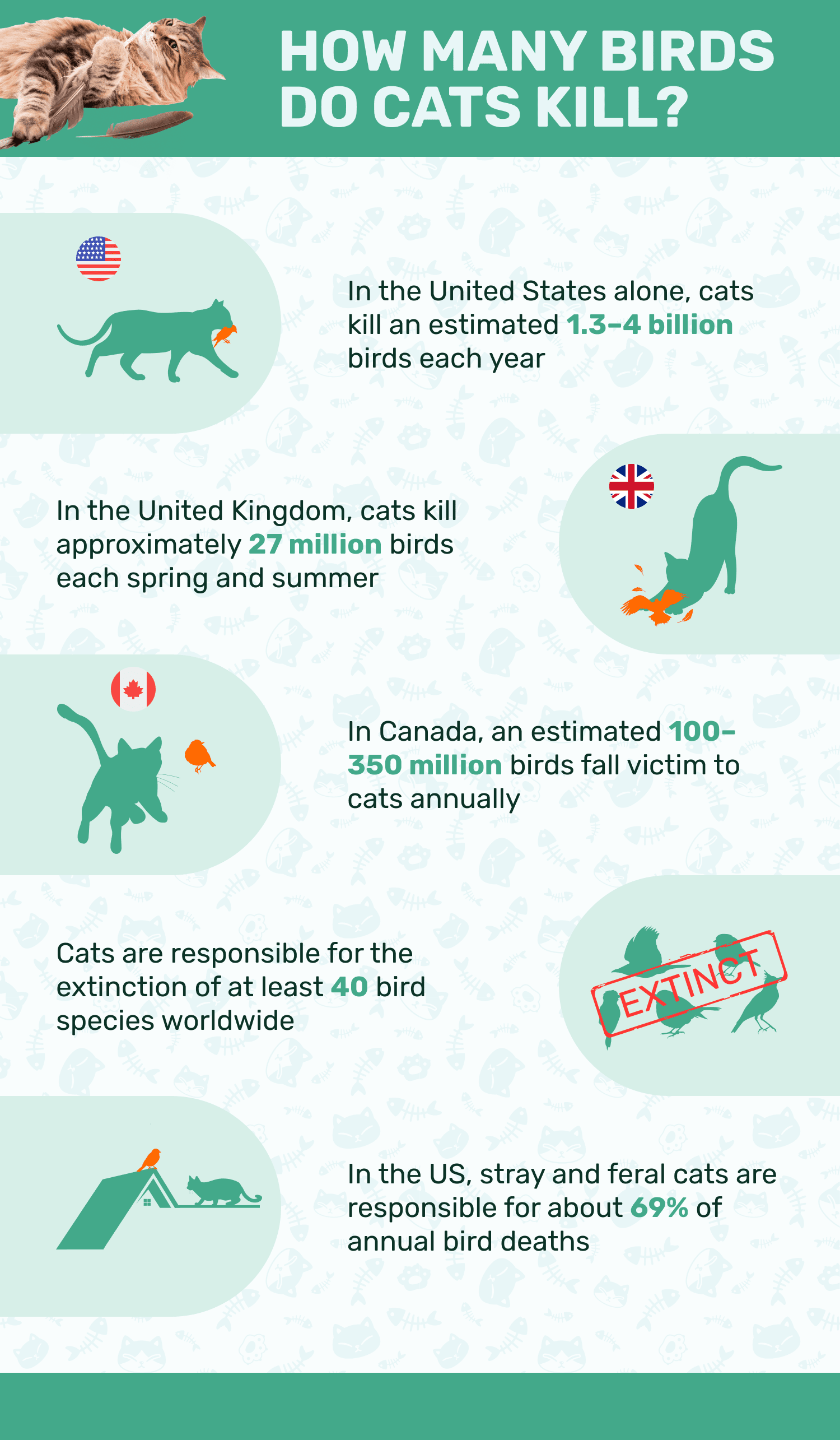

How Many Birds Are Killed by Cats Worldwide?
1. In the United States, cats kill an estimated 1.3–4.0 billion birds each year.
(Texas Biodiversity)
Cats are the leading cause of death for birds in the United States. The second leading cause of death is collisions with windows, which kills about 988 million birds each year.
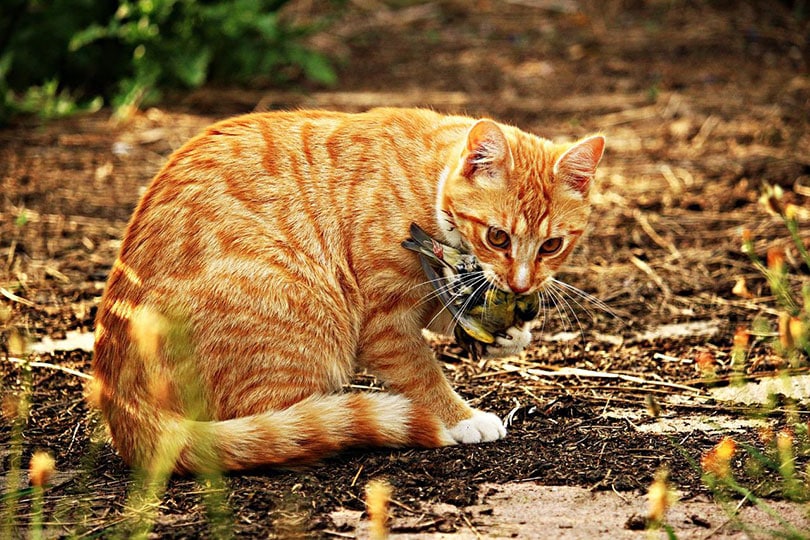
2. In the United Kingdom, cats kill approximately 27 million birds each spring & summer.
(RSPB)
This figure is believed to be an underestimation because it counts only confirmed kills, not birds caught and eaten or injured, only to die later. The most commonly killed species in the United Kingdom are house sparrows, bluetits, blackbirds, and starlings.
3. The most recent study done in Australia in 2017 estimated that cats killed an average of 1 million birds per day, about 377 million per year.
(Science Direct)
The rate of bird deaths in Australia varies depending on whether the country is experiencing the wet or dry season. Approximately 99% of the birds killed are native species. The rates of bird deaths on islands are about ten times higher than in mainland locations.
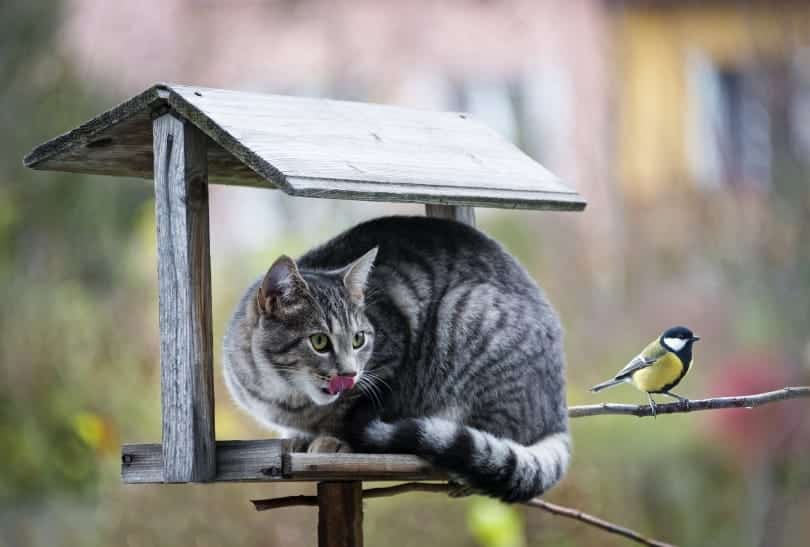
4. In Canada, an estimated 100-350 million birds fall victim to cats each year.
(Avian Conservation And Ecology)
Canadian researchers found that certain species were especially vulnerable to cats. These included species that nest on or near the ground and those most likely to live near humans and eat at bird feeders. Feral cats are known to kill adult ducks and game birds that are the same size as they are.
5. In Poland, cats kill roughly 136 million birds each year.
(Journal of Environmental Law)
This figure is based on a study of farm cats, so the actual number may well be higher. Like in the U.S., cats are the leading cause of death for birds in several European countries. The article cited, published in 2019, caused much controversy in Europe because it suggested that owners of free-ranging cats violated European Union environmental laws.
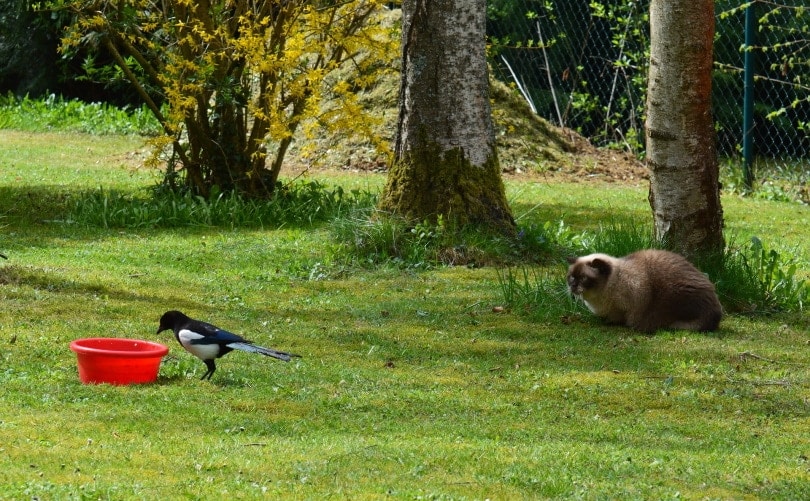
6. The domestic cats of Cape Town, South Africa, kill about 450,000 cats each year.
(Africa Geographic)
The impact of cats on birds is not well-studied in Africa. Previous estimates of birds killed in Cape Town relied on a survey of cat owners recording the prey their kitties brought home. However, this study relied on data compiled by placing “kitty cams” on 130 cats and studying the footage. Video evidence revealed that cats killed 80% of their prey on the spot when they caught it, causing the researchers to revise their previous estimate upward by about five times.
7. A 2021 study estimated that cats kill between 2.69–5.52 billion birds in China each year.
(Biological Conservation)
The researchers specified that this is the minimum number of birds killed each year in China. They arrived at their data using statistical analysis of kill rates from owned, feral, and semi-feral cats from both urban and rural areas of China. The impact of this death rate on the biodiversity of Chinese bird species is unknown but suspected to be harmful.
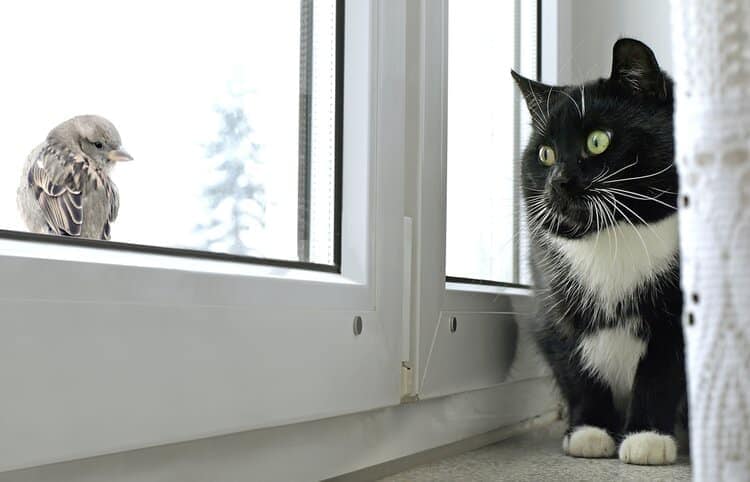

What Impact Do Cat Killings Have on the Overall Bird Population?
8. Cats are responsible for the extinction of at least 40 bird species worldwide.
(People And Nature)
Because cats aren’t technically native to any country or continent, they are considered an invasive species worldwide. Their predatory impact is most commonly felt on native wildlife species, especially those living on islands. Legend has it that a single cat was responsible for the extinction of the Stephen’s Island wren, a flightless bird found on a single island near New Zealand. In reality, several cats were probably to blame, but the impact remains enormous.
9. On islands worldwide, feral cats are the main threat to almost 8% of endangered species, including birds.
(Global Change Biology)
Predatory felines have an oversized impact on islands because they contain the majority of the biodiversity on Earth. Island species tend to be unprepared to deal with the effects of such a prolific predator, making them easy targets for quick extinction. This study reported on the results of cat predation from 120 islands worldwide.
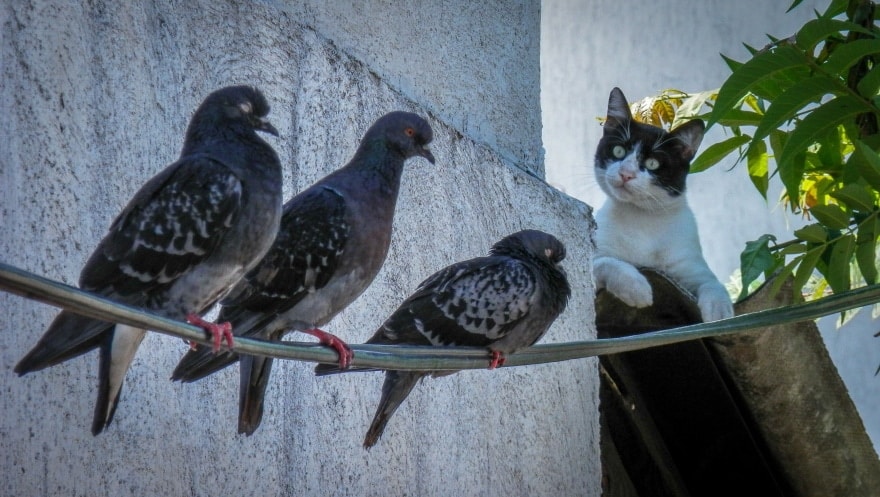
10. An estimated 2%–7% of birds in southern Canada are killed by cats each year.
(Avian Conservation And Ecology)
These numbers are likely an undercount because researchers did not have a very accurate count of the feral cat population in Canada or their eating habits. Many of the species affected live primarily in southern Canada, hence the greater kill rate in that area.

Do Pet Cats or Feral Cats Kill More Birds?
11. In the United States, unowned cats are responsible for about 69% of annual bird deaths.
(Nature)
For this study, the authors counted barn cats, colony cats, strays fed by humans, and feral cats as unowned. The number and predation rate of these stray cats caused the most variation and uncertainties in determining the overall bird death counts.
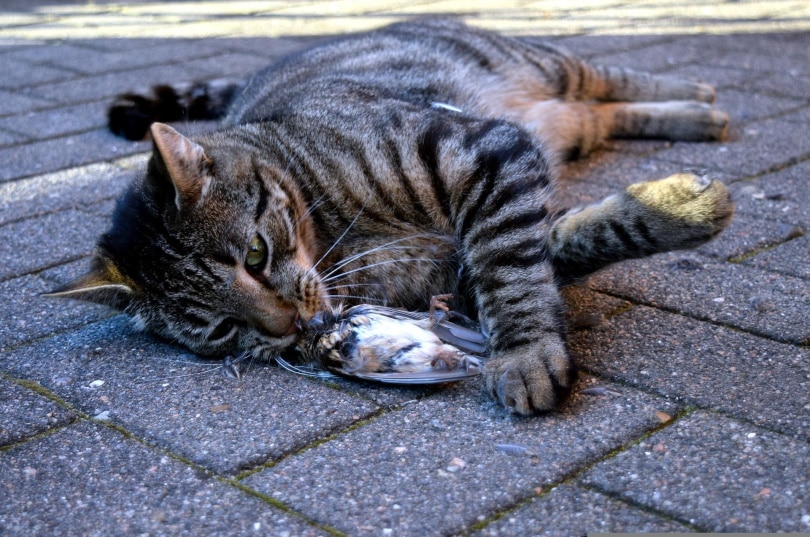
12. In Australia, feral cats are responsible for about 272 million of the 377 million yearly bird killings.
(Science Direct)
This number includes only birds killed in natural settings because it was reported with a greater confidence level by the researchers. They also estimate that an additional 44 million birds are killed by feral cats in “modified landscapes,” although they have less evidence to support this number. This leaves only 61 million bird deaths to attribute to pet cats.
13. Overall, unowned cats kill three times as many animals, including birds, than pet cats that are allowed to roam.
(Nature)
For cats, hunting is an instinct not always driven by hunger. Because of this, even pet cats that never miss a meal will still kill birds. However, stray cats kill at a much higher rate overall, leading to this statistic. Feral cats have much higher access to wildlife, as well as a greater need to feed themselves.
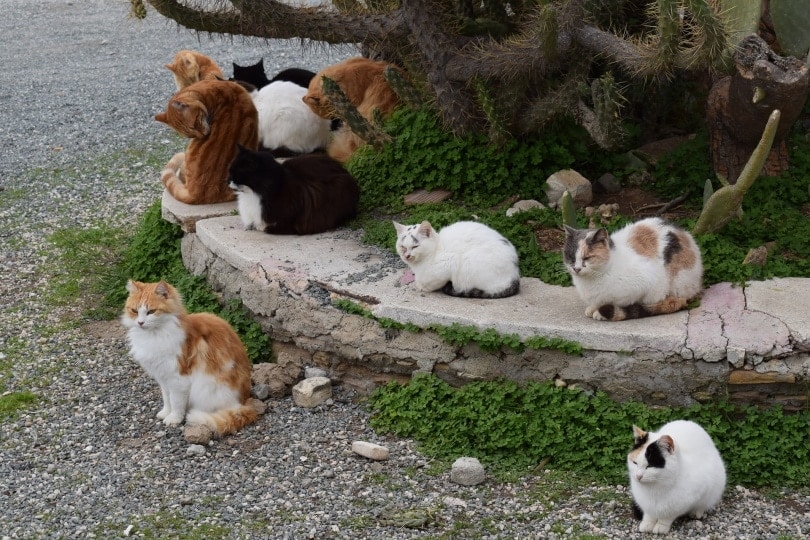
FAQ
What Other Species Do Cats Kill?
Cats take a serious toll on birds, but they are much more destructive to mammals. Reptiles, amphibians, and insects are all frequent victims as well. For example, in the United States, mammals killed by cats each year number from 6.3 to 22.3 billion! In Australia, cats kill almost twice as many reptiles as birds each year, about 649 million. (Journal Of Environmental Law)
Besides Direct Killing, What Other Impacts Do Cats Have on Wildlife Populations?
The mere presence of cats can impact birds’ feeding and nesting habits, even if they never actually kill one. The cat’s hunting habits also put them in direct competition with birds of prey, like hawks, which are already competing with other natural predators. Domestic cats can also pass diseases to wild cat species or shed parasites into the environment that impact multiple animals as well as water quality. (People And Nature)

How Can We Protect Birds From Cats?
The simplest way to protect birds is to keep cats indoors. Not only is this safest for birds but cats as well. Outdoor cats experience significantly shortened lifespans compared to indoor kitties. Life-threatening dangers to outdoor cats include vehicle accidents, diseases, fights with other cats, and falling victim to predators themselves.
If possible, outdoor cats should wear bells to help alert birds to their presence. Controlling feral cat populations is vital for protecting birds due to their higher predation rate. On islands with vulnerable, endangered species, feral cat populations are often eliminated entirely. Encouraging spaying and neutering of all cats, including trap-neuter-release (TNR) programs for feral colonies, is another effective way to decrease the number of feral cats. (Texas Biodiversity)
Conclusion
Cats may be the world’s cutest serial killers, but their impact on the planet’s biodiversity is undeniable. Add keeping your cat indoors to the list of changes you make to live a more eco-conscious lifestyle, and your local birds will thank you! If you’re worried your cat is missing out on enjoying the outdoors, consider building a “catio” or teaching your cat to walk on a leash. And be sure to provide plenty of toys, scratching posts, and attention to help your indoor kitty stay entertained and out of trouble.
Featured Image Credit: Sari ONeal, Shutterstock
Contents
- The 13 Statistics for How Many Birds Do Cats Kill
- How Many Birds Are Killed by Cats Worldwide?
- 1. In the United States, cats kill an estimated 1.3–4.0 billion birds each year.
- 2. In the United Kingdom, cats kill approximately 27 million birds each spring & summer.
- 3. The most recent study done in Australia in 2017 estimated that cats killed an average of 1 million birds per day, about 377 million per year.
- 4. In Canada, an estimated 100-350 million birds fall victim to cats each year.
- 5. In Poland, cats kill roughly 136 million birds each year.
- 6. The domestic cats of Cape Town, South Africa, kill about 450,000 cats each year.
- 7. A 2021 study estimated that cats kill between 2.69–5.52 billion birds in China each year.
- What Impact Do Cat Killings Have on the Overall Bird Population?
- 8. Cats are responsible for the extinction of at least 40 bird species worldwide.
- 9. On islands worldwide, feral cats are the main threat to almost 8% of endangered species, including birds.
- 10. An estimated 2%–7% of birds in southern Canada are killed by cats each year.
- Do Pet Cats or Feral Cats Kill More Birds?
- 11. In the United States, unowned cats are responsible for about 69% of annual bird deaths.
- 12. In Australia, feral cats are responsible for about 272 million of the 377 million yearly bird killings.
- 13. Overall, unowned cats kill three times as many animals, including birds, than pet cats that are allowed to roam.
- FAQ
- What Other Species Do Cats Kill?
- Besides Direct Killing, What Other Impacts Do Cats Have on Wildlife Populations?
- How Can We Protect Birds From Cats?
- Conclusion

